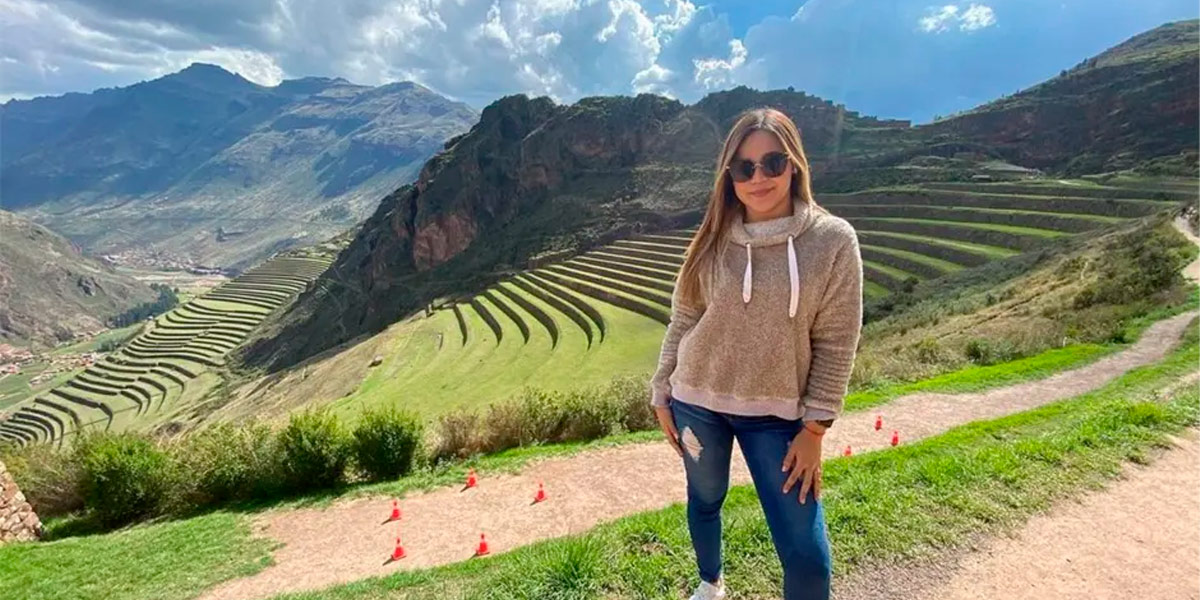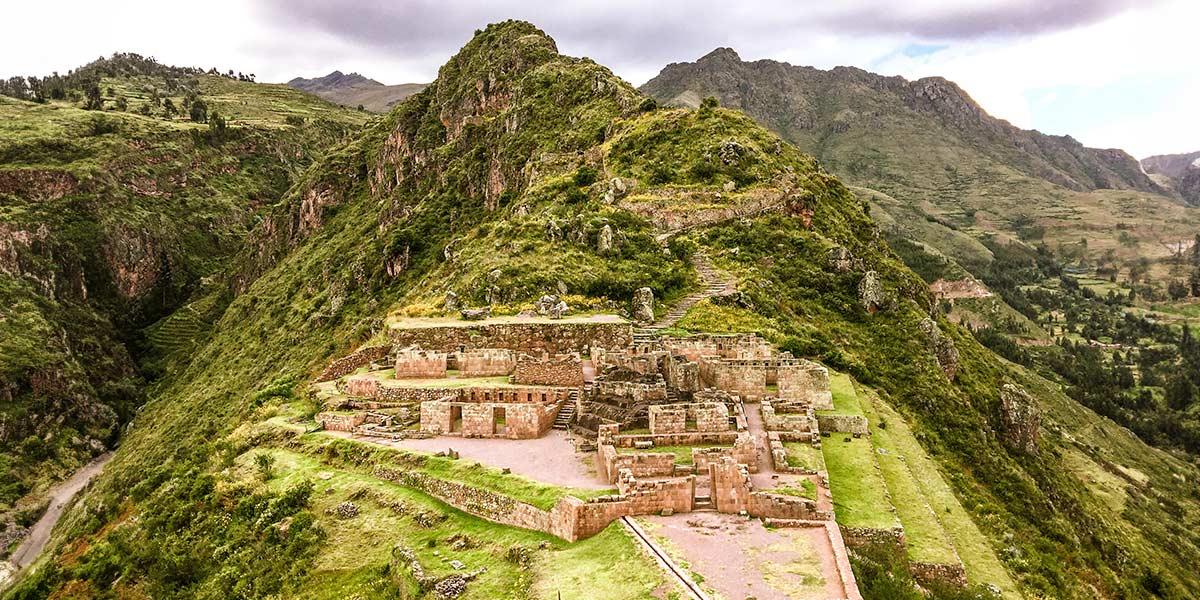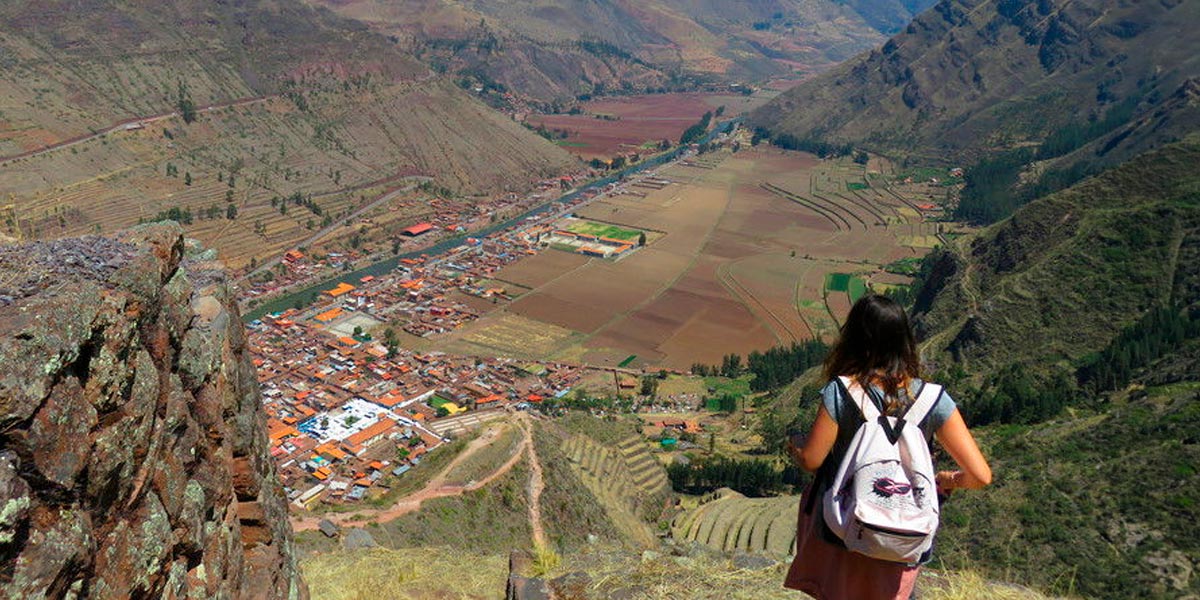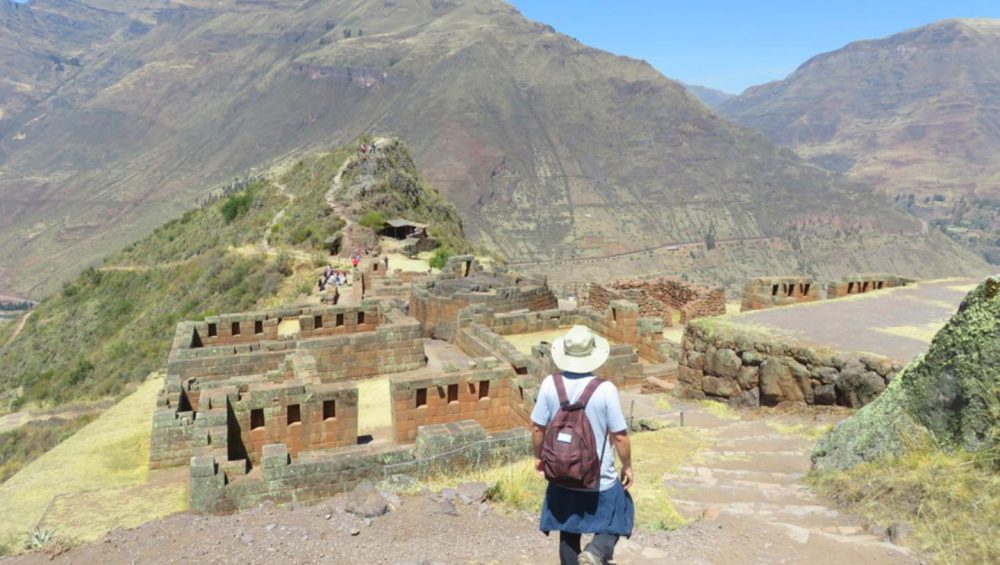Pisac is one of the most fascinating destinations in the Sacred Valley of the Incas, famous for its impressive archaeological complex and for keeping Andean traditions alive in its colonial town. Located just 30 kilometers from Cusco, this place combines history, culture, and nature, offering travelers a complete experience that goes from touring ancient Inca ruins to enjoying a market full of colors, crafts, and local flavors.
Besides its historical importance, Pisac is known for its privileged location in the mountains, which offers spectacular views of the valley and an ideal environment for those who enjoy hiking, photography, and cultural tourism. Its mix of Inca legacy, living customs, and Andean landscapes make Pisac an essential stop for every traveler who explores Cusco and the Sacred Valley.
About Pisac
-
What does Pisac mean?
The name Pisac comes from the Quechua p’isaqa, which refers to an Andean partridge very common in the area. According to tradition, the Incas used to shape their cities by taking inspiration from animals, and it is believed that Pisac was designed with the silhouette of this bird, a symbol of abundance and connection with nature.
-
Origin of the name
The word p’isaqa not only evokes the presence of this bird in the surroundings, but also the spiritual relationship that the Incas established between the elements of nature and their settlements. In this way, Pisac maintains a symbolic link with the Andean fauna and with the Inca worldview that sought a balance between man and his environment.
-
History of Pisac
The origin of Pisac dates back to the Inca period, around the 15th century, when it was built as an agricultural, military, and religious complex. Its strategic location high in the mountains allowed it to watch over and protect the Sacred Valley, while its terraces and irrigation systems served to ensure agricultural production on difficult terrain.
One of the most well-known legends about Pisac is that of Princess Inquill and Prince Asto Rímac. Inquill’s father, the cacique Huayllapuma, set the condition for her to marry: building a bridge over the Willcamayu River (today Vilcanota or Urubamba) in a single night. Asto Rímac accepted the challenge and almost completed it, but the princess, disobeying the warning not to turn around while climbing a hill, turned to stone at dawn, leaving the fate of both unfinished. This legend is preserved as part of Pisac’s cultural identity.
-
General description of Pisac
Pisac is a notable example of Inca architecture and engineering, with complex systems of terraces, temples, and ceremonial sectors that are harmonically integrated into the Andean landscape. At the same time, the colonial town of Pisac keeps its traditional charm with narrow streets, a main square, and a craft market famous for its textiles, ceramics, and colorful fairs that attract visitors from all over the world.
Location of Pisac
The town of Pisac is located in the province of Calca, about 30 kilometers northeast of Cusco, within the Sacred Valley of the Incas. It is located at an approximate altitude of 2,950 meters above sea level, on the banks of the Vilcanota (Urubamba) river. This strategic location makes it the gateway to the valley, surrounded by mountains and Inca terraces that frame both the colonial town and the imposing archaeological complex located at a higher altitude, about 3,250 meters.
Pisac Climate
The climate in Pisac is temperate mountain, with sunny days and cool nights, which makes it pleasant to visit both the town and the archaeological complex. Its location in the Sacred Valley gives it an ideal environment for agriculture and at the same time provides travelers with favorable conditions to enjoy the visit almost all year round.
-
Average Temperatures
The average annual temperature in Pisac ranges between 10 °C and 18 °C. During the day, on clear days it can reach 20 °C to 25 °C, while on cold or cloudy nights it can drop to 8 °C. This thermal variation makes it advisable to wear light clothes for the day and a jacket or coat for the afternoon and night.
-
Rainy and Dry Seasons
Pisac has two seasons that characterize it: the rainy season, which runs from November to March, when the mountains are covered with vegetation and the landscapes become greener, and the dry season, from April to October, characterized by clear skies and a greater influx of visitors. The most recommended time to travel is during the dry season, especially between June and August, when the climate is more stable and perfect for exploring the archaeological complex.

Ways to get to Pisac
Getting to Pisac from Cusco is easy and offers different options depending on the time available and the experience the traveler wants to have. There are two main routes: one is shorter and more direct, and the other is longer and goes through different landscapes on the way.
-
Quick Route Cusco – Pisac
The most common and comfortable way to get there is by taking the direct road from Cusco to Pisac. The trip by bus, taxi, or shared van takes about 40 to 45 minutes. This route is ideal for those who want to make the most of their travel time and get to the town quickly to explore both its market and the archaeological site.
-
Route Cusco – San Salvador – Pisac
The second option is the Cusco – San Salvador – Pisac route, which goes around the southern part of the valley. This trip takes about 1 hour and 20 minutes to 1 hour and 25 minutes, offering a more scenic and peaceful experience. It is recommended for those who want to appreciate the Andean landscapes, see rural communities on the way, and have a more scenic trip before getting to Pisac.
Pisac Archaeological Center
The Pisac archaeological complex is one of the most extensive and important in the Sacred Valley. Built on top of a mountain at about 3,250 meters of altitude, it combines military, agricultural, and ceremonial architecture, which reflects the strategic and cultural importance it had during the Inca Empire. Its privileged location also offers panoramic views of the valley and its fertile lands.

-
Main elements
Within the complex there are numerous sectors that include homes, aqueducts, roads, bridges, towers, ceremonial centers, and one of the largest Inca cemeteries in the region. The agricultural terraces also stand out, designed with notable engineering to take advantage of the slopes and guarantee food production at high altitude.
In addition to its size, Pisac is recognized for the large number of towers or viewpoints (approximately 20) distributed along the hill. These had surveillance and defense functions, ensuring control of the valley routes and reinforcing the military character of the site.
-
Quality in the stonework
The stonework in Pisac shows different styles and uses. While the walls of common homes were built with the pirka technique (stones joined with mud), the ceremonial and religious sectors show stones finely carved and fitted with great precision. In some cases, the pink granite blocks seem to merge with the natural formations of the mountain, demonstrating the high level of skill of the Inca architects.
-
Sectors of the archaeological complex of Pisac
-
-
- Amaru Punku – “Snake’s Gate” Marks the entrance to the complex and is characterized by its large trapezoidal door and the enormous stone hinges, which probably held a monumental gate. From there, a narrow path leads to the main part of the archaeological site.
- Q’alla Q’asa – Residential sector and rock tunnel This sector gets its name from a tunnel carved into the rock that connects to the top of the hill. It consists of about thirty buildings that would have been the homes of the sentinels. The construction technique is pirka, and its location next to the cliff shows the ability of the Incas to adapt architecture to difficult terrain.
- Intihuatana – Solar observatory and sun temple In this sector is the famous Intihuatana, which means “to tie up the sun,” possibly used as an astronomical observatory and agricultural calendar. The sun temple is built around a circular rock and surrounded by finely carved walls, which shows its sacred and ceremonial character.
- La Chakana – Symbol of the Andean worldview Represented in the form of a stepped cross, the chakana symbolizes the three worlds of the Inca worldview: the Hanan Pacha (upper world), the Kay Pacha (earthly world), and the Uku Pacha (lower world). It is associated with the sacred animals: the condor, the puma, and the snake.
- Tianayoc – Administrative area and seat rock Located in the upper part of the Intihuatana, this sector has rooms distributed around a plaza. It is believed to have had administrative functions. There is a rock carved in the shape of a seat, possibly used by authorities.
- P’isaqa – The old neighborhood and its terraces It is a residential complex with semicircular terraces, where walls built with the pirka technique prevail. Unlike the ceremonial sectors, here polished stone was not used, since it was reserved for the buildings of the elite.
- Tantana Marka – The great Inca cemetery Considered the largest Inca cemetery in the region, with more than a thousand tombs discovered (although it is estimated that there were up to ten thousand). Unfortunately, many of them were looted, but their magnitude shows the cultural and spiritual relevance of Pisac.
-
Why visit it?
Pisac is one of the most complete destinations in the Sacred Valley, where the greatness of Inca architecture is combined with the authenticity of a town that still keeps its customs. It is ideal for those looking for history, Andean landscapes, and direct contact with living traditions, all in one place close to Cusco.
What to expect from the visit?
The visitor can walk through a large archaeological complex with ceremonial sectors, terraces, and viewpoints, in addition to enjoying the most famous artisan market in the valley. It is also possible to walk through its colonial streets, try the local cuisine, and explore its surroundings, which makes the experience a mix of culture, nature, and adventure.

Tours to Pisac
Visiting Pisac through a tour is one of the most recommended ways, as it allows you to make the most of your time and have specialized guides who explain the history and secrets of the place. Most tours include transfers from Cusco, stops at viewpoints, and a visit to other sites within the Sacred Valley.
Tour to the Sacred Valley
The classic Sacred Valley tour includes Pisac as one of its first stops, along with the artisan market and the archaeological center. During the tour, travelers enjoy panoramic views of the valley and learn about the importance of Inca agriculture through the terraces and hydraulic systems of Pisac.
After the visit, the tour continues to other iconic places like Ollantaytambo and Chinchero, where the cultural and archaeological experience is complemented. This full-day tour is ideal for those who want to get to know the valley and its main attractions in depth in a short time.
Tour to the Sacred Valley and Machu Picchu
Another alternative is to combine the Sacred Valley with Machu Picchu on a two-day itinerary. On the first day, you visit Pisac along with other towns and archaeological sites in the valley, such as Ollantaytambo, where you usually take the train to Aguas Calientes.
The next day, travelers have the opportunity to explore Machu Picchu, one of the most anticipated destinations in Peru. This option is perfect for those looking for a more complete experience, uniting the cultural richness of the Sacred Valley with the majesty of the Inca citadel.
Pisac: prices and hours
Visiting Pisac is an accessible and organized experience, ideal for those who want to explore both its town and its archaeological complex. Entry is through the Cusco Tourist Ticket, which gives access to this and other sites in the Sacred Valley, with set hours that allow you to make the most of your visit.
- How to visit Pisac?
There are two main ways to visit Pisac: on your own or through a tour. Independent travelers can get there by public transport or taxi from Cusco and explore the town and the archaeological complex at their own pace. On the other hand, organized tours offer the advantage of a guide who explains the history, the worldview, and the details of the Inca architecture, in addition to including comfortable transfers and, in many cases, other stops in the Sacred Valley. - How much does the entrance cost?
Access to the Pisac Archaeological Center is included in the Partial Cusco Tourist Ticket of the Sacred Valley, with an approximate cost of 70 soles for foreigners and 40 soles for Peruvians. The General Tourist Ticket can also be bought, which costs around 130 soles and allows entry to 16 archaeological sites and museums in Cusco and its surroundings. - What are the hours of operation?
The Pisac Archaeological Center opens every day of the week, from 7:00 a.m. to 6:00 p.m.. These hours allow you to enjoy both morning walks with fewer crowds and afternoon tours, when the sunlight turns the terraces and mountains of the valley golden. - When is the best time to go?
The best time to visit Pisac is during the dry season (April to October), when the weather is sunny and the views of the valley are clearer. However, the rainy season (November to March) also has its appeal, as the landscape turns intensely green and is less crowded, which offers a more peaceful experience for travelers looking for authenticity.
Other activities on your visit to Pisac
Besides the archaeological center, Pisac offers a number of activities that enrich the travel experience. From cultural walks to tasting its varied gastronomy, the town is a complete destination for those looking for nature, history, and living customs in one place.
- Pisac Botanical Garden
This small but interesting space brings together a great diversity of Andean and exotic plants. In it, visitors can observe native species used in traditional medicine, as well as ornamental flowers that beautify the valley. It is an ideal stop for those who enjoy ecological tourism and want to learn more about the local flora. - Visit to the Pisac market
The famous Pisac market is one of the most colorful in Cusco and a meeting point between locals and travelers. Here you will find handmade textiles, ceramics, handicrafts, and silver jewelry, along with fruits, vegetables, and fresh local products. It is the perfect place to take an authentic souvenir and appreciate the Andean artisan tradition. - Enjoy the local gastronomy
The visit would not be complete without trying the typical dishes of the valley. In Pisac, fried trout, pachamanca, and Andean soups made with corn and quinoa stand out. In addition, the restaurants and picanterías in the town offer a mix of traditional cuisine with modern touches, ideal to pair with a chicha morada or a craft beer.

